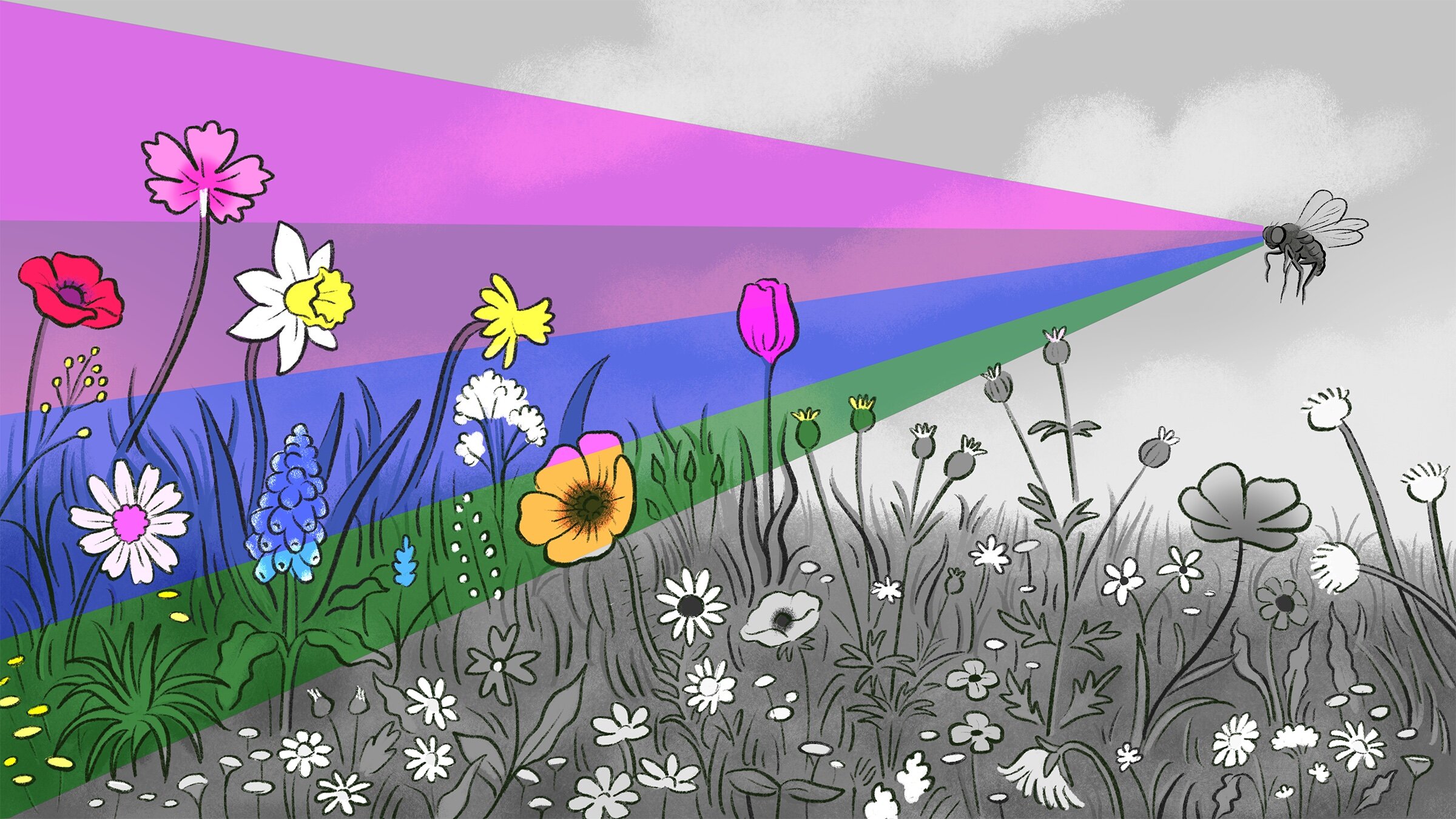Researchers at Columbia University have identified brain-cell circuitry in fruit flies that converts sensory signals into color perceptions. These neurons respond selectively to different hues, including ultraviolet wavelengths important for survival in some creatures. By using a fly-brain connectome to map neural circuits, the researchers developed mathematical models to simulate the brain’s activity and capabilities. The models revealed that hue selectivity requires a type of cell-to-cell interconnectivity known as recurrence. Disrupting this connectivity in fruit flies led to a loss of hue-selective activity, confirming the role of brain circuitry in color perception. The findings provide insight into how the brain produces perceptions like color.
Source link
Fruit fly study reveals brain-cell circuitry that could underlie how creatures large and small see wavelengths of light
